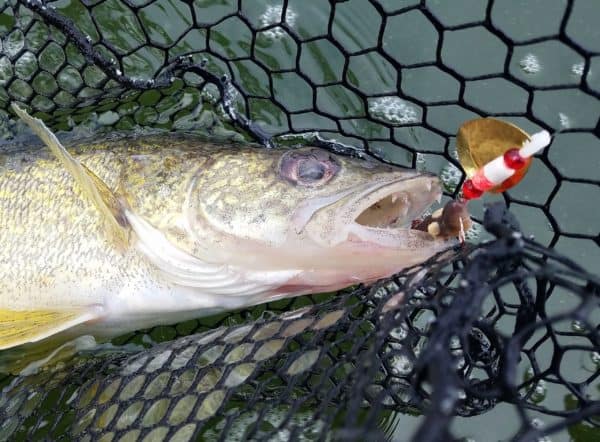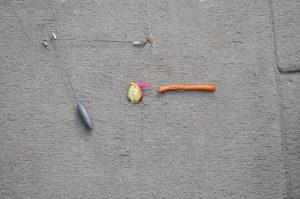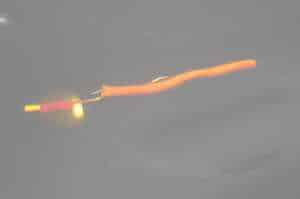Super Simple Way to Tie and Manage Crawler Harnesses
Category: article
May 15th, 2020 by Keith Worrall
Modified May 15th, 2020 at 10:17 PM

Super Simple Way to Tie and Manage Crawler Harnesses
One of the most effective presentations to catch walleyes is a crawler harness. The combination of the spinner providing color, flash and vibration teamed up with a live bait offering is hard for a walleye to resist. They can be drifted or trolled. Most use a bottom bouncer along with a harness or snelled spinner 3-5 feet long.
There are many nice options in the market to purchase crawler harnesses. The selection and quality have improved.
I have been tying my own harnesses for years for many reasons. First, I don’t trust other people’s knots during tournament conditions. Second, I can create my own lengths, color patterns with beads and hook spread. Line, beads, components and hooks are readily available. Finally, it is inexpensive and gives me satisfaction catching fish on something I made on my own.
Check out how to tie your own harnesses below.
The materials needed to tie your own harnesses read like a recipe.
–Fluorocarbon Line (I use 15 lb test)
-Octopus hooks (#2, #4, or #6)
-Quick change clevices
-Beads, various size, colors (Enough beads so when the spinner blade is added to the clevis, it doesn’t cover the first hook)
-When harnesses are tied, blades to add to the harness when out on the water
As you begin to accumulate a variety of harnesses, it is important both for the well being of the harness but also for efficiency in the boat to have a good storage system. I personally use a system that is both effective and inexpensive. It is all explained below.
A crawler harness and snelled spinner is basically the same thing. When you are not using a night crawler, we don’t call is a crawler harness anymore, thus it’s a snelled spinner. Semantics out of the way, these set ups are effective.

Why is the snelled spinner so effective? A lot of reasons, the flash of the blade. The different color combinations of the beads and blades. The vibration of the spinner is sensed by the walleyes lateral line much like that of the prey they feed. You can put crawlers, minnows, leeches and plastics on a harness.
My go to set up is a two ounce bottom bouncer with a harness between 4-6′ long. It is conducive to use a longer snell in clearer waters, thus on Lake of the Woods, I normally go about 5′ or so as the water is stained. In a nutshell, the key with this presentation is to slowly be pulling this through the water column where the fish are so the blade is spinning and a desirable speed the walleyes want that given day.

What that looks like is drifting or trolling your set up with a desirable 45 degree angle. When I am trolling in my boat, my goal is 1.25 mph. You don’t want the snelled spinner way behind the boat like when you are trolling with a crankbait. You want that 45 degree angle and have total control.
Keep the sinker just off the bottom, not dragging the bottom, but rather touch the bottom once in a while to know you are down there and lift just off so you avoid snags and other debris.
When a walleye grabs it, it loads up like a wet sock. Normally they don’t hammer it. Simply lower you rod tip back at the same speed of the boat so the walleye doesn’t feel anything change for two seconds and swing the rod with a mild hookset. Baitcaster rod in rod holder, Lake of the Woods
When using a crawler, I suggest a two hook harness and pinch off the crawler once hooked on the harness so only about 3-4″ of tail hangs off of the back hook. This will avoid missing walleyes that grab the back of the rig.
This set up covers water. It can be used from shallow to deep. It will catch everything that swims. And for the folks who go fishing with you less experienced, is a relatively easy way to get walleyes hooked up.
Crawler harness, Lake of the WoodsGive spinners a try this year, you might be surprised how many more walleyes end up in your boat!